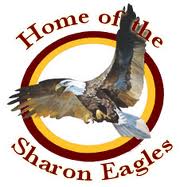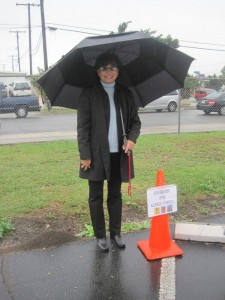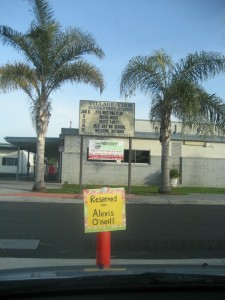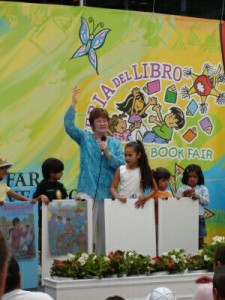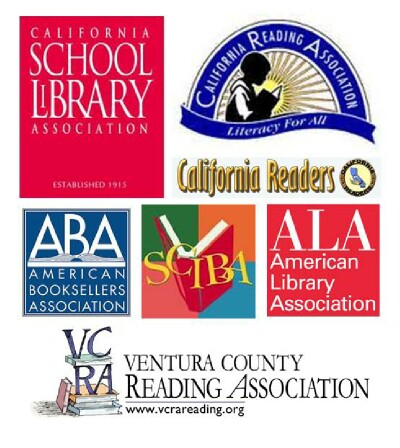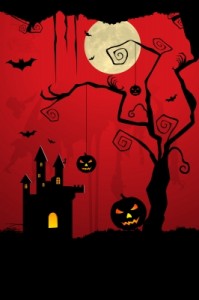
Image courtesy of digitalart/ FreeDigitalPhotos.net
My email inbox sees a steady stream of authors asking for advice on how to handle specific school visit situations. Since these concerns are the concerns of many, I thought I’d do a little “Dear Abby” here and post the question and my response in case this might help you, too.
Dear Alexis,
I have a school visit set up for a local 6th grade language arts class. I thought I’d start with the publishing process and then talk a bit about where ideas come from. The teacher asked that I lead them into a Halloween creative writing assignment, so figured I might give them a couple different images to choose from. Just how much can I shove into 30-60 minutes? I was afraid if I talked about details as well, that it might be one subject too many. What do you think?” — Happy-But-Anxious
Dear Happy-But-Anxious,
First, congratulations on trying out new material in this one-class-dose at a familiar school. When you do this, it gives you a chance to get feedback from the teacher in a supportive environment and to tweak your presentation before you do it at another venue. This builds skill and confidence.
Now – about the workshop. A workshop is different from a school assembly in that it engages students in a hands-on experience to teach a specific strategy that students can apply to their work. In terms of pacing, think in chunks of time. How many minutes will you devote to each segment of your session? Possible sequences (60-minutes, 45-minutes) might look like this:
SEQUENCE for 60-minute session (ideal time)
10 minutes: Introduction to you and your works
15 minutes Activity Part 1: Model the strategy with the students
15 minutes: Activity Part 2: Have students apply strategy independently
10 minutes: Group Share
5 minutes: Wrap-up & Next Steps
5 minutes: Q & A
SEQUENCE for 45-minute session
5 minutes: Introduction to you and your works
10 minutes Activity Part 1: Model the strategy with the students
10 minutes: Activity Part 2: Have students apply strategy independently
10 minutes: Group Share
10 minutes: Wrap-up and Q & A
OPENING: The kids will want to know about you and your upcoming book, so it’s a good way to start and build rapport.
ACTIVITY Part 1: Plan to focus on ONE thing and do it thoroughly. For example, rather than talk about where ideas come from, why not do a couple of different exercises that will have them actually generating ideas. Using photos as prompts is a great technique. You might call this exercise the “Idea Bank” (and in your case, it might be the “Halloween Idea Bank.”) They will make “deposits” into this bank that they can “withdraw” from when they need to.
It always helps to model what you want the students to do, so, you might begin this segment by observing a photo together and have them generate ideas as a group.
ACTIVITY Part 2: In the next step, give them another photo and have them generate ideas independently. You can show one photo on a big screen to the whole class, give a photo to small groups, or give out individual photos.
GROUP SHARE: Invite students to share some ideas they’ve written down. (Make this voluntary.)
WRAP-UP and NEXT STEPS: Quickly review the technique you demonstrated and extend this by sharing other specific strategies that you have used to generate ideas for your books or magazine articles.
In addition to generating the Halloween Idea Bank, you might have students produce an opening sentence, a slice of dialogue, or a dramatic closing sentence to prime the pump for future writing. But by teaching them the bigger strategy of how to generate ideas, they will be better equipped to create stories later.
Q & A: If you have time at the end, invite them to ask you about your work. This helps build a bond, writer-to-writer, and lets students know that their struggles are normal.
Finally, by blending the “you” part (you as a writer and your book) and the “them” part (giving them a strategy they can apply to their writing) you’ll produce a satisfying session.
Good luck!
If you have a question, send an email to alexis@SchoolVisitExperts.com and put “Ask Alexis” in the subject line.
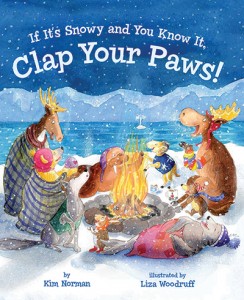 School visit season is over. Summer vacation is here. But keep your brain humming! Summer is a great time to reflect on what worked well for you last year and to think ahead to what you can implement in the next school year. Here’s some advice from author and school visit expert, Kim Norman.
School visit season is over. Summer vacation is here. But keep your brain humming! Summer is a great time to reflect on what worked well for you last year and to think ahead to what you can implement in the next school year. Here’s some advice from author and school visit expert, Kim Norman.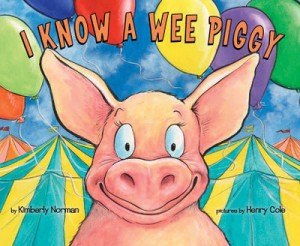 found it’s unnecessary. After a few minutes, even “jaded” 5th and 6th graders are eager to participate. Also, the disappointment is too great for those who don’t win the treats.
found it’s unnecessary. After a few minutes, even “jaded” 5th and 6th graders are eager to participate. Also, the disappointment is too great for those who don’t win the treats. Kim Normanis the award-winning author of several picture books including TEN ON THE SLED (Sterling), IF IT’S SNOWY AND YOU KNOW IT, CLAP YOUR PAWS (Sterling), and I KNOW A WEE PIGGY (Dial). Kim has visited more than a hundred schools around the U.S. where she shares the joy of books and the humorous “horror” of her Evil Inner Editors. Her popular resource, Children’s Authors by State, provides a terrific service to teachers, librarians and parents who are hosting author visits.
Kim Normanis the award-winning author of several picture books including TEN ON THE SLED (Sterling), IF IT’S SNOWY AND YOU KNOW IT, CLAP YOUR PAWS (Sterling), and I KNOW A WEE PIGGY (Dial). Kim has visited more than a hundred schools around the U.S. where she shares the joy of books and the humorous “horror” of her Evil Inner Editors. Her popular resource, Children’s Authors by State, provides a terrific service to teachers, librarians and parents who are hosting author visits. 


